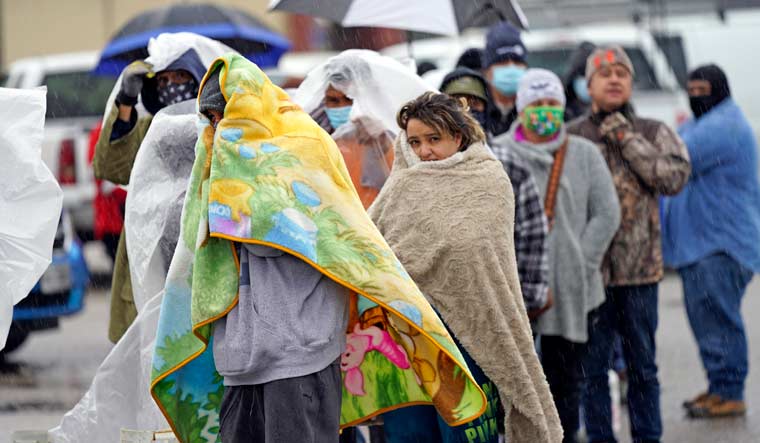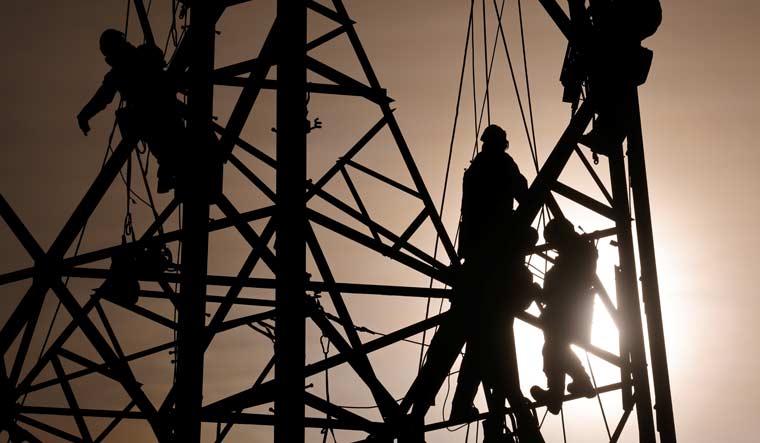They could not keep the lights on in Texas. They still can’t.
For years, the state has been riding on an “independence” streak that had politicians wanting to secede from the United States as late as last month in protest against Donald Trump's loss in the national elections. But that was only a symptom, as is the current electricity crisis, of the famous Texas hubris about its energy production and a parallel belief among a good slice of its population that it can be better off without the rest of the United States attached to it.
The February cold spell, however, has been a train wreck for the vast state. Millions of Texans were left in the cold and the dark when a polar vortex enveloped the state early in the week. Supply dropped as demand rose. Lack of electricity meant lack of running water, frozen pipes, broken water mains, fire stations without water pressure, hospitals without water, and people with water under instructions to boil water before using it—a difficult thing to do without power.
Unlike any other state, Texas has its own electric grid, set up to avoid federal regulations. Along with the regulations, however, came the ability to share and transfer energy with other states in cases of extreme shortages like this one. Texas power plants are not weatherized as, say, those in Alaska or Wisconsin.
Not being a part of the national grid, Texas' standalone deregulated grid could not get any of the excess energy other states could share.
Alone in the US, Texas is its own energy island, the national grids stop at its borders, except for two small strips of far counties. Its southern neighbour Mexico has its grid connected to help those areas in need of energy due to surges or shortages, the states of Tamaulipas, Chihuahua, Coahuila, and Nuevo León did experience energy high demand and blackouts but those have not lingered on long as they have in Texas.
Hotels in Mexican border areas are full of Americans, with Texans escaping the dark for electricity and warmth on the Mexican side. There was not a room available in Reynosa, Tamaulipas Thursday morning as a new wave of cold and snow was predicted over Texas.
In Mansfield Texas, the impending threat moved people in the middle of a pandemic to invite others into their houses with electricity to keep them from dying in the cold.
The state’s Energy Reliability Commission tried to balance out the impact of the energy shortages by instituting rolling blackouts, but it turned out Texans could not even rely on the agency to reliably roll out the rolling blackouts, with some homes remaining without electricity for as long as 48 hours instead of the 20 minutes to 2 hours it announced they would last.
With COVID-19 still ravaging the state, the event is a deadly catastrophe upon a catastrophe. People trying to stay warm by running their cars have caused a rise in the number of cases of carbon monoxide poisoning in the state.
But, what really led to the Texas disaster?
 People wait in line to fill propane tanks Wednesday, Feb. 17, 2021, in Houston | AP Photo/David J. Phillip
People wait in line to fill propane tanks Wednesday, Feb. 17, 2021, in Houston | AP Photo/David J. Phillip
If you listen to Texas Governor Greg Abbott while on conservative media, it was renewable energy and Alexandria Ocasio-Cortez’s Green New Deal that is to blame; when he spoke on other media, not so much, he stuck closer to the situation on the ground. Political opportunism was up and working before the state’s electrical supply.
The reality, however, is that the weather was beyond what Texas independent power system was prepared to handle.
Early reports of windmills freezing provided an easy and convenient visual but, it turns out, all renewable energy amounts to only 10 per cent of the state’s energy supply. The highly lucrative fossil fuel industry in Texas is the source for the state’s other 90 per cent of its energy needs. There was an across-the-board failure of energy sources that affected every county in Texas.
Lack of weatherization for the unexpected event caused every power source feeding the state’s grid to fail due to equipment failures and inadequate infrastructure— coal, natural gas, crude, wind, nuclear, and solar as pipeline freezes impeded the flow of natural gas and crude oil, causing a cascading catastrophe that had as many as four million without power and has over 600,000 homes still in the dark as of Thursday morning. People are still using their cars to keep warm, or heading to crowded Warming Centers in the middle of a pandemic. The governor has now admitted as much.
In a state where its own governor is a climate change sceptic and many in the population agree, acceptance that these extreme events are a consequence of warmer temperatures is a hurdle that needs to be overcome before the state can move to prepare for the coming change.
Scientists say that a mass of extremely hot air over the Arctic has caused a direct disruption of the polar vortex, causing a phenomenon called Arctic Amplification. According to Profesor J. Marshall Shepherd, director of the Atmospheric Sciences Program at the University of Georgia, that causes a greater, wavier jet stream with high amplitude waves that teaches further south and creates these extreme events, with longer, stronger weather events.
With separate state and federal investigations underway, Texas still has to understand what went wrong and whether the state’s energy infrastructure is prepared for extreme weather.
The Texas grid is a “Wild West” market designed based on short-run prices, according to Matt Breidert, senior portfolio manager of Infrastructure & Energy Transition at London-based Ecofin energy investments. Connecting to the greater US grid “might have a more stable resource portfolio to handle this event,” he said.
For his part, Governor Abbott is now looking to avoid the political fallout and demanding investigations of the failure.
“The Electric Reliability Council of Texas has been anything but reliable over the past 48 hours,” he said in a statement demanding answers. “Far too many Texans are without power and heat for their homes as our state faces freezing temperatures and severe winter weather. This is unacceptable.”
The answer, scientists say, may lay on coming out of the dark in climate change understanding and realizing that this is just one of the coming impacts upon the state.
“I think the key point is that we need to be prepared for these extreme events, today and in the future,” said Lori Bird, director of the U.S. Energy Program at the World Resources Institute speaking to NPR. What happened in Texas shows that “all energy generation sources are vulnerable to these extreme events,” she said.





